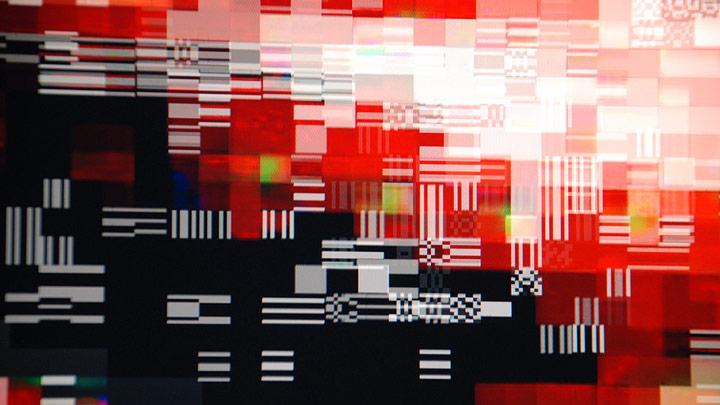Radio SS113
Listening to the more than human soundscape
Proof of concept | Research
The Strada Statale 113 (SS113) runs along the northern coast of Sicily, connecting Messina to Trapani, passing through Palermo and dozens of other towns, villages, and coastal areas.
The 377-kilometer route is based on the ancient Via Consolare Valeria and has served as a crucial road infrastructure for the island for millennia. The SS113 is thus deeply intertwined with both the communities it crosses and connects, and with the sea, which it laps for much of its route.
However, this long history of interaction between humanity and the environment is not without tensions and contradictions. The phenomenon of anthropization – that is, the impact of human activity on the coastal territory – has radically transformed the local ecosystem, affecting not only the perception of the landscape but also the quality of life of the communities, both human and non-human, that live along the road.
Concept
Radio SS113 (a collaboration with musician, composer and sound designer Mac Tire and architect and artist Raffaella Campanella) aims to explore and document the relationship between the built environment and the aquatic environment along the Strada Statale 113 by recording its “soundscape” (Schafer, 1985). By juxtaposing the auditory signals of the motorized road with marine sounds, Radio SS113 highlights the richness of acoustic events in these often dissonant environments that contribute to the characteristic sound footprint of the area.
Through listening to the sound recordings – and by extracting additional data on traffic and weather conditions – the project aims to stimulate a critical reflection on the impact of human activity on the coastal ecosystem, particularly in terms of noise and air pollution. The audio tracks collected along the SS113 will offer an excellent opportunity to hear and understand the invisible but omnipresent violence of noise on the habitat and its inhabitants. The recordings will also unfilteredly document local events and contribute to preserving a sonic memory of the traditions and cultural practices of coastal Sicily, as part of a broader ecological memory of the places.
Radio SS113 promotes the importance of soundscapes as a symphonic expression of a “more-than-human world”. No longer is the world a passive stage for human actions but a multifaceted entity, continuously transformed by the forces of the biosphere and geosphere, “active participants in collective becoming”. In this context, human and technological sounds are only apparently opposed to so-called natural ones. And human culture is “just one facet of something infinitely larger. Human life and nature are inextricably involved in all other things and infused with their essence.” (Bridle, 2022)
Radio SS113 is also linked to the practice of Deep listening, as formulated by Pauline Oliveros, which has among its objectives the breaking of traditional patterns of approach to sound in contemporary Western society. Thanks to this practice, human beings can imagine and perceive in a new way the spaces they inhabit and the environment that surrounds them:
Expanding listening means being connected with the totality of the environment that surrounds us, and to something even larger. […] Deep Listening is a form of meditation. Attention is directed to the interaction between sounds and silences, that is, to the continuum of sound/silence. It is not limited to music or voices, but includes all perceptible vibrations. The relationship between all perceptible sounds is fundamental. […] Compassion (spiritual development) and understanding come from impartially listening to the entire space-time continuum of sound, without limiting oneself to what seems relevant at that moment. In this way, discovery and exploration are made possible. New fields of thought open up and the individual can expand and have opportunities to connect to communities in new ways.
(Oliveros, 2023)
Recognizing this continuum in the sounds of Radio SS113 allows for greater awareness – and hopefully greater respect – of the profound ecological relationships at play in a given environment.

Implementation
The pilot listening area is located at kilometer 228 of the SS113, between the town of Trabia and the namesake exit of the A19. In this part of the route, the average altitude is 5 meters above sea level, and the distance from the shoreline is often less than 10 meters. Road and sea are sometimes contiguous, other times separated by a row of villas, which are ideally located for the installation and maintenance of the equipment. The area is densely populated and frequented, especially in summer, with a continuous flow of traffic between Termini Imerese, Trabia, and the village of San Nicola l’Arena.
In this setting, Radio SS113 plans to install a group of sound recorders positioned as closely as possible to each other:
- A microphone on the shoreline (or an omnidirectional microphone capsule floating on the sea surface);
- A shallow water hydrophone;
- An panoramic microphone near the road (or multiple shotgun microphones for different directions of traffic);
- A geophone on the asphalt of the roadside.
The synchronized recording of these sound streams can capture a significant portion of the most frequent acoustic events in the area: the eternal marine currents, the sudden roar of countless Ape 50s, the echo of holidaymakers’ karaoke, the cries of seagulls in flight, the Doppler effect of ambulance sirens, the rustling of dry seaweed.
Thanks to repeated and prolonged recordings, it will be possible to collect auditory traces of the place that have a less frequent rhythm: the hum of fishing lights hunting octopuses on new moon nights, the songs from car radios that change with the seasons, the storms whipped up by the Mistral, the chatter of pilgrims heading to the Madonna della Milicia sanctuary at the beginning of September.
Further listening locations will be identified later, with different characteristics from both an anthropic and landscape perspective. Setting up a series of recording stations along the entire route between Messina and Trapani is the natural development of the project, allowing for a deeper comparison and analysis of the soundscapes along the SS113.
Demo #1 from the pilot listening station
The following 15-minute audio track was recorded at the pilot station on Saturday, August 17, 2024, at 10:54 PM. The microphones of two iPhones were used, positioned perpendicularly to the road about 15 meters apart. On the right channel, you can hear the audio just a few centimeters from the shoreline; on the left channel, the audio recorded from the SS113 road at human height.
Immersive installation
Any quadriphonic recording of Radio SS113 lasting at least 30 minutes, without the need for special filters or post-production, creates a rich, dense, and interesting sound scene to explore, ideal for installation and playback in spaces of various sizes and configurations.
Depending on the characteristics of the area, appropriate acoustic sources will be chosen to best transmit each of the recorded streams. To respect the original microphone configuration, the sources of coastal and marine sounds will be opposed in space to the road and terrestrial ones, creating a full and complex sound experience for listeners moving within the installation area.
In addition to the conceptual and content aspects, the installation will be designed to encourage deep listening and convey the constant tension between atmospheric, biological, and mechanical sounds. A sort of competition in volume, variety, rhythm, in the ears of the listener, sometimes harmonious, sometimes cacophonous.
To enrich the experience and make it accessible to people with hearing difficulties, the lighting and haptic perception of the environment will vary in sync with the content of the recordings. It is possible to imagine directional lights blinding participants as cars pass by, light sources placed inside a water tank that vibrates with the sound of underwater waves, or even subwoofers moving the air based on the asphalt vibrations, thus creating a synesthetic reinforcement that amplifies the impact of the work.
Web radio
The full potential of the project is expressed through continuous recording streamed online. The Radio SS113 web platform will integrate real-time audio streams from the pilot site and any future stations. To encourage participation and co-design, instructions will be provided for designing and building your own recording station (even in a simplified form), inspired by the Locus Sonus Stream project (Locus Sonus Vitae, n.d.).
The platform will also allow for the visualization of measurements and data extracted from the recordings, such as comparing the average volume and peak of road and marine audio streams. The full archive of recordings and data will be made available to sound designers, researchers and experimenters interested in the topic.
By integrating other sensors and analysis tools, it will be possible to measure and visualize other information useful for achieving the project’s objectives, including:
- the number of vehicles in transit and their respective speed (using the Doppler effect or a digital speedometer);
- the atmospheric, water, and asphalt temperature;
- the most played songs on the road (through audio identification);
- the bird species and other living beings passing by (through audio recognition).
Main references
- Bridle, J. (2022). Modi di essere. Rizzoli.
- Krause, B., & United Visual Artists. (2020). The Great Animal Orchestra. Fondation Cartier Pour l’Art Contemporain, Paris.
- Locus Sonus Vitae. (n.d.). Locus Sonus Stream (LOCUSTREAM) Project.
- Oliveros, P. (2023). Deep listening. La pratica sonora di una compositrice. Timeo.
- Schafer, R. M. (1985). Il paesaggio sonoro. Casa Ricordi.
- Wikipedia. (2024, July 25). Strada statale 113 Settentrionale Sicula.



